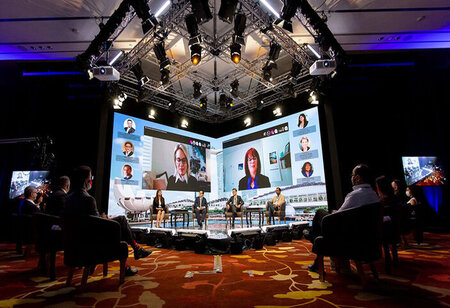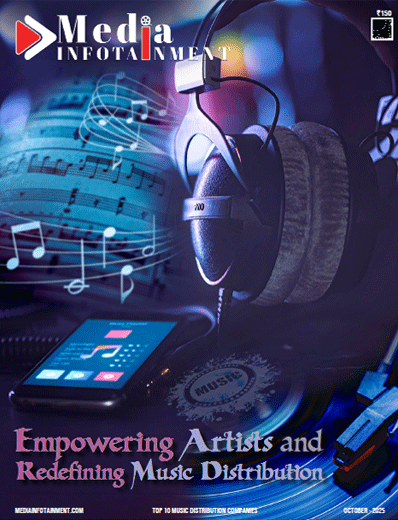The Future of Live Events: Hybrid Experiences
The worldwide pandemic has completely upended the event business. A few companies in the sector have shut down entirely, while others have been compelled to switch to virtual products. The cost of waiting, or better still, doing nothing, is far higher than the hassle of completely changing your event concept. Almost everyone has been exposed to virtual events this year, and a hybrid model is currently taking shape. It is conceivable that this paradigm will endure even after the constraints are removed. I'll start by going over some high-level methods to think about in order to assist you advance as an industry leader, and then I'll dive into the specifics.
What is a hybrid event, first of all?
A hybrid event approach carefully blends virtual and in-person components for participants.
The hybrid event model is very variable and depends on a number of variables, including the audience, industry, location, budget, and purpose. The most difficult issue to resolve is which elements should be done in person or virtually.
Sorting your event into the following categories is a smart place to start:
• Main Event: This is the main live portion of the event, which may take place in person or virtually. Pro tip: You might advertise this as a VIP experience for 50–100 participants, even if there could already be event caps to take into account.Read More
• Live pop-up Locations: Think of these as your five to ten on-the-ground reporters reporting live from your major markets, with the option to broadcast virtually as well. Pro tip: Take advantage of this wonderful chance to interact with the finest representatives in your town and build its local foundation.
• Virtual: Save the greatest and most instructive material for this part of the program. Pro tip: Make use of this element to further benefit from your on-demand approach.
• Digital: Facebook Live, Instagram, Twitter, LinkedIn, and other social media platforms.
Upon grouping your event categories and determining which components would best engage your target audience, you can proceed to develop the execution model. One such example would be live satellite pop-ups that have a primary virtual component and a robust digital approach. Having outlined your hybrid component plan and event strategy, the following step is to select the appropriate tech stack to ensure a flawless execution of your hybrid event.
"Engaging your audience successfully is the key to all of this. Include them in all aspects of the hybrid event plan and solicit their opinions. With feedback, you can immediately make adjustments based on what people are and are not connecting with. Organizing all of this may seem overwhelming at first, but keep in mind that businesses who don't adjust with the market run the danger of falling behind as they grow. Your ability to coordinate events in a hybrid style will help you become recognized as a leader in the field and an inspiration to others."
Favorite tech stack tools of choice:
1. Web-based Casting Platform: This will let you schedule, record parts in advance, synchronize slides, connect to social media, answer questions from viewers, and provide a customisable interface.
2. Apps for Involvement and Communication: In this case, consider applications such as Slack or an event planner. Provide a playful means for guests to interact with the community.
3. Social Media: Choose the platforms where members of your community are most engaged and master those techniques. If an unexpected issue arises - which it always does - be sure to take customer care availability into account while selecting the appropriate equipment!
4. Event Planning: A successful event requires a high turnout and the attendance of your target demographic. Your hybrid event's sales and marketing plan is equally crucial as the event itself.
5. Prior Initiative: Make the value additions apparent to your intended audience. What benefit does attendance have for them? Is there a narrative or subject that you may use in your advertising? Depending on the ad channel, mix up your mediums by using text, images, and video. Take advantage of possibilities to form aligned community connections and your subscription base.
6. On-Going Phase: The energy is everything. Because of the virtual components, this can be a little trickier, but still doable. Consider how to post, distribute, and convey the excitement.
7. Following: Do you recall the on-demand content concept I discussed before? This is where it will be useful. In all likelihood, viewers may not be able to see everything live. Promote on-demand recorded access to the most instructive segments so that attendees who missed some of the live event may still learn from it. Utilize images, highlights, and the most captivating elements to maintain the momentum.
Engaging your audience successfully is the key to all of this. Include them in all aspects of the hybrid event plan and solicit their opinions. With feedback, you can immediately make adjustments based on what people are and are not connecting with. Organizing all of this may seem overwhelming at first, but keep in mind that businesses who don't adjust with the market run the danger of falling behind as they grow. Your ability to coordinate events in a hybrid style will help you become recognized as a leader in the field and an inspiration to others.
🍪 Do you like Cookies?
We use cookies to ensure you get the best experience on our website. Read more...






